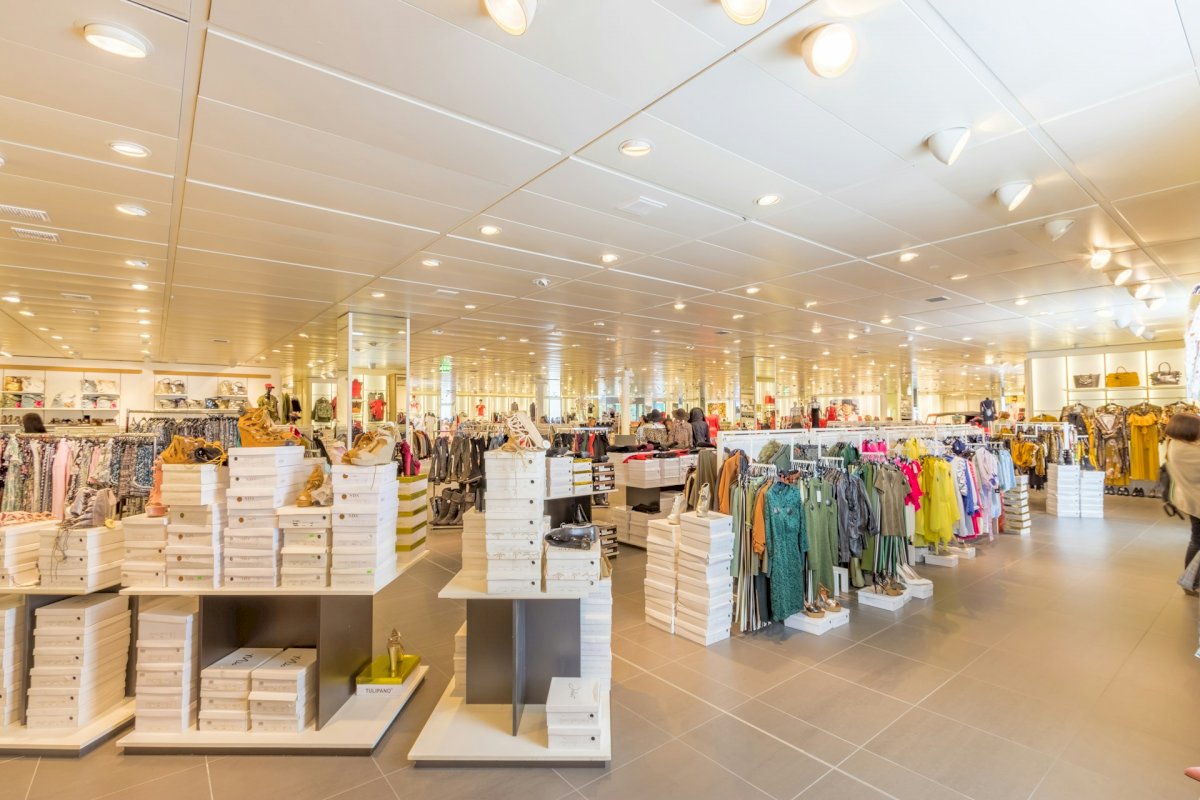Content navigation:
- Introduction
- How did CV19 impact different types of retailers?
- How can retailers architect business for post CV19 future?
- Key focus: portfolio and competition
- Make pricing work for you in 2021
On March 4, Competera invited renowned industry experts and retailers to discuss the most effective approaches to run the business in 2021. The online fireside chat 'How to be Prepared For Coming Back to Old Normality in 2021' was joined by dr. Maciej Kraus, Stanford lecturer and the author of 'The Naked Mind-Shortcuts to Sales: Neuromarketing Overview for Profitability and Business Success', Harold Konijnenberg, Director of Category Management at a market-leading Benelux photo and video equipment retailer Kamera Express, and Wojciech Gorzeń, Head of Pricing and Sales Excellence at Movens Capital, profit and performance improvement expert with 20+ years of experience. The discussion was moderated by Competera's Managing Director Andrew Mulvenna.
In this article, we've put together all the takeaways along with the key insights and recommendations discussed by the experts. Make yourself comfortable and get ready to find how CV19 impacted different types of retailers, what should the business undertake to deal with 'Old Normality' in 2021, and what to do now in terms of price optimization software. Let's start!
How did CV19 impact different retailers?
As a part of the discussion, the experts took several real-life cases to find what was either specific or common in terms of the CV19 impact on different retail industries. In particular, Maciej Kraus shared his experience of working with a large pharma store chain before and during the pandemic.
The company is the largest pharma online seller in one of the European countries with approximately 180 offline stores. As the pandemic started, pricing has turned out to be one of the most vulnerable domains of the business. Before the outbreak, the online and offline prices were managed independently as two separate processes with little if any coherency. Because the company was already selling online, it did not have to invest much in e-commerce after the CV19 outbreak. However, what has shortly become obvious was that the online competition has increased remarkably while dozens of new players eventually moved online.
As a result, the business had to deal with a surge of price pressure and growing price sensitivity of the customers. Subsequently, besides the need for offering the best prices, the company was also forced to enhance the shopping experience to retain the consumers (e.g. by transforming offline stores to the order pick-up points). And at the same time, due to increasing price sensitivity, it was no longer possible to operate offline prices as an independent process. That means the company was forced to integrate and automate a large number of processes in a very short period.
Harold Konijnenberg from Kamera Express has, in turn, outlined the CV19 impact on the retailers specialized in non-essential products with considerable offline sales. His company's sales distribution across the channels before the crisis was approximately 45% per online and 55% per offline stores. As a result of CV19 impact, several offline stores were closed and the sales structure was changed. However, the turnover losses due to the stores' closure were almost fully recouped with increased online sales. What it means is that CV19 did not undermine the demand for non-essential products but changed the sales structure.
Also, the sales distribution within the portfolio has changed. For example, the top-rank expensive cameras traditionally distributed better through offline stores dropped in volume while the sales of electronics for home use or social media content creation surged. As a result, the company had to reconsider the supply structure to make sure it is relevant to changing demand. What is also interesting is that the company had to reconsider its offline strategy. It was now focused on maintaining fewer, yet larger stores with extra services ensuring a unique customer experience (e.g. educational events, training facilities, etc).
How to architect business for post CV19 future
One thing that all the experts emphasized in terms of effective business transformation is the need for strategy. It means that architecting the business for the post CV19 future starts with a comprehensive analysis aimed at defining current challenges, reconsidering strategic goals, and specifying tools and instruments needed to achieve these goals. Now, what can be learned from the cases shared by the experts? Here are the takeaways:
-
CV19 accelerated the trends prevailing before the pandemic (an increase of e-commerce, growing price transparency, etc.)
-
Players that were already selling online were better prepared for the transformations
-
Size of the business or market share attained in pre-crisis time was not enough for staying competitive in the 'New Normal'
-
Attractive prices and extra services become the core of competitive advantage in the new reality
-
To win you have to integrate operations and processes across different channels quicker and smoother than competitors
-
Integrated management of online and offline prices starts with a comprehensive strategy development followed by the relevant tools' selection
-
CV-19 has changed the demand patterns and product roles within the portfolio requiring the retailers to reconsider their supply and sourcing strategy
-
Effective offline stores' management relies on unique experiences that cannot be offered online
Based on these takeaways, three crucial recommendations to prepare for 'Old Normality' can be outlined. First, reconsider the strategy to make sure it reflects the changed demand structure and sales distribution across different channels. Second, adopt your assortment strategy to the new reality, i.e. revise the former roles of various types of products in your portfolio. Third, integrate the operations (pricing, product sourcing and supply, etc.) across different channels and make sure to support an attractive pricing policy with extra services ensuring a seamless shopping experience.
Key focus: portfolio and competition
Wojciech Gorzeń from Movens Capital outlined in detail the importance of portfolio and competition management in 2021. Once the company's strategy is redefined, the next step implies a comprehensive portfolio analysis. As a retailer, you should clearly understand which are the current roles of products in your assortment and which portfolio structure you need to come up with to make sure your strategic goals are secured.
Pricing is a tool, just like a hammer. To use it properly, you must have a clear vision of the end result. That's why the strategy should
always come first.
CV19 has changed the product roles, for example, those SKUs that generated margin before the crisis can now drop in sales becoming long-tail products. Defining which part of your portfolio is now bringing traffic in, defines your price perception on market, generates margin, etc. is essential to understand what kind of products you need to add or remove from the assortment. With a clear vision of your post-CV19 portfolio, you can move on to competition management.
One of the major outcomes of global economic turbulence caused by the pandemic was the huge number of new players starting to sell online. As a result, the competition has changed, becoming more intense and diverse. Many retailers became confused by the need to follow a huge number of emerging players. The fact is that an average assortment intersection between the retailers, in most cases, does not exceed the point of 35%. In other words, you don't have to follow all the competitors selling the same type of product. What you need to do is to find up to 5 real competitors that are stealing your sales and target the same group of shoppers.
Make pricing work for you in 2021
Advanced pricing software, e.g. Competera, can do more than you might have thought. In particular, it can help to deal with both of the challenges we've outlined above — reconsidering the portfolio and finding the true competitors. Let's see how it works.
Product roles within the portfolio are not stable. Today's KVIs may turn into long-tail SKUs or revenue-generators tomorrow. The only way to reveal the genuine role of each product is to analyze the comprehensive dataset showing its performance dynamics. At Competera, we use a blend of technology and sophisticated math (e.g. Graph theory, time-series based algorithm, etc) to segment products into various buckets (BPGs, long tail, KVIs, traffic or revenue generators, etc) based on sales and price history, promo changes, stock attributes, and other pricing and non-pricing factors. Subsequently, a retailer gets an explicit vision of the portfolio structure and can change it with data-driven decisions to make sure it corresponds to the recent goals and challenges.
Retailers that would like to grow their key business metrics sustainably should consider primarily the demand-based price optimization. The latter is run by a unique engine capable of finding the optimal price points for any number of SKUs. While a pricing manager can manually deal with only 10% of key positions, Competera’s engine can cover the entire portfolio. It means that a range of diverse strategies can be applied to every product group. The only thing a manager has to do is to choose the metrics to be protected and the one to grow per particular optimization group. Then, the platform will do the job quickly and accurately relying on the last-gen ML and AI technology.
If you want to know how the demand-based price optimization works practically, read the case of a large consumer electronics retailer with $500 million in annual turnover. Using the engine described above, the company managed to gain a revenue uplift by 13.6%, increase average transaction value by 7.8%, and many more.
But for some retailers, it would be more relevant to start with implementing a more simple solution, yet coherent with their current strategic needs. That is a combination of smart competitive data and automation. Practically, it means making more error-free pricing decisions based on data and saving the time of managers and all the stakeholders involved in pricing.
Real-life numbers speak better than words, so we're not going to go much into technical details but just give one recent case. Right before the CV19 outbreak, Wiggle Chain Reaction Cycles asked for automating the repricing process and improving competitive coverage to save time and stop losing margin by following unnecessary competitors. Eventually, Competera enabled Wiggle CRC to gain even more benefits than it was expected before the crisis. Particularly, the competitive coverage was enhanced at lower costs (through smart marketplaces' monitoring) while the repricing time was reduced by 50%.
If you want to know more about the solution’s design and the way it works, you can explore the 'Product' and other sections on our website. You may also submit a request to get free consultancy from Competera solution architects and discuss in detail which particular pricing strategy and technology blend would be the most relevant for your business in terms of getting back to post-pandemic 'Old Normality'.







